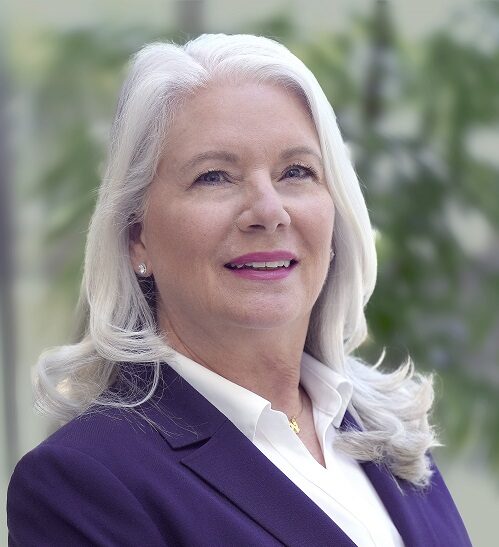Why physician burnout is a problem and what you can do to prevent it.
It’s a busy evening in the emergency department of the hospital where you recruit. The waiting area is quickly filling up with patients – a man complaining of neck pain after a car wreck, a little boy clutching his side and looking pale, a woman who cut herself on a glass while washing dishes. Patients and their family members are getting restless and so is the staff. Frazzled physicians whiz by, grabbing from stacks of disheveled patient forms, looking tired and disengaged.
You wonder – what can I do to help prevent physician burnout?
Physician burnout is a growing problem that has the potential to affect every patient in the United States. More and more physicians are reporting symptoms of burnout such as depersonalization, depression and exhaustion. As a hospital administrator, you know that it has an impact on your staff and your patients.
You can mitigate the effects of the physician burnout epidemic. Now’s the time to get a handle on what’s making physicians feel burned out in your organization and instill practices that reduce your facility’s risk.
In this report, we’ll examine the breadth of the problem and provide tangible solutions on how to prevent physician burnout in your organization.

How big is the problem?
Physicians suffer more burnout than any other U.S. worker, according to a 2012 report in the Archives of Internal Medicine that surveyed more than 7,000 U.S. physicians.
In a 2014 study by the Physicians Foundation, more than 80 percent of surveyed physicians reported being at capacity or overextended. Additionally, 44 percent planned to take steps that would reduce patient access to their services.
Symptoms of physician burnout (via an article published by Wayne M. Sotile, Ph.D., and Mary O. Sotile, M.A.) can include:
- Emotional exhaustion.
- Impaired cognitive functions.
- Depersonalization and lack of compassion for patients.
- Diminished sense of personal accomplishment.
- Increased signs of emotional distress.
- Conflicts with others.
- Increased work-related mistakes.
- Physical problems related to stress.
Causes of physician burnout.
Medicine is inherently a stressful industry. Lives are on the line. Your customers are sick or injured, making them at their most vulnerable states. Physicians are expected to not only be scientists – performing physically and mentally exhausting work – but also be empathetic and understanding of their patients.
Beyond that unchangeable quality of healthcare, there are a number of other factors contributing to physicians feeling stressed:
- Debt. According to the American Medical Student Association, the median debt for medical students at a public institution is more than $119,000. Studies show a sizable link between debt and decreased psychological health.
- Physician shortage. The Association of American Colleges predicts a shortage of 37,800 and 124,000 physicians by 2034, meaning longer hours and more patients for current physicians.
- Pay-For-Performance Models (PFP). The practice of PFP is now commonly used in commercial health plans and Medicare/Medicaid plans, but it’s hard to define quality care and patient satisfaction.
- Administrative duties. On average, U.S. doctors spend an hour each day on paperwork, time they’re not spending on patient care.
How does burnout affect my hospital?
Emergency physicians with burnout were significantly more likely to self-report suboptimal patient care, according to a 2015 study.
Medical students experience a drop in empathy the more they become burned out, according to Mayo Clinic research. An additional study found a strong link between the depersonalization dimension of physician burnout and lower patient satisfaction and longer post discharge recovery time.
A high incidence of burnout in your physician population puts you at risk for:
- High physician turnover.
- Inability to attract top candidates based on a negative reputation.
- Reduced productivity from your staff.
- Diminished patient care.
- Mistakes and malpractice suits.
- Mental health issues among your physicians.
What can my facility do to fix the problem?
It’s time for every hospital to have a plan for combating physician burnout.
Hiring a physician is a huge investment for your hospital. With salary and benefits, a physician could cost your hospital $1 million within a five-year span.
In his book “Healing Physician Burnout,” performance expert Quint Studer compares hiring a physician to purchasing a $1 million machine:
A machine would not just be bought and installed only to have the organization just move on. Instead, it would receive regular check-ups and enforcement to ensure it was operating at an optimal level.
What makes a satisfied physician? Jackson Healthcare found in a national physician survey that satisfied physicians were more likely to work eight hours per day, but an average physician works 9-12 hours a day and a 53-hour week.
What your facility can do to prevent physician burnout.
Gather data.
Examine your staffing mix.
One of the best things you can do for your facility is to make sure you have adequate staffing. This doesn’t necessarily mean having more staff members, but the right mix of physicians, physician assistants, nurses and other professionals.
Use locum tenens.
Employing locum tenens physicians can help alleviate stress on your staff physicians. Consider hiring a locum tenens staffing agency, which can find the right doctors to fit your needs. Look for an agency that is a member of the National Association of Locum Tenens Organizations (NALTO), which means it agrees to abide by industry best practices and standards.
Encourage time off.
It’s best if you have a solid pool of physicians from which you can call when one of your physicians needs time off for a vacation or life event. Studies show that when employees take their vacation time, they not only help themselves, but are better contributors to their employers.
Don’t forget wellness offerings.
Providing mental health support for physicians should be integrated into your program. The Cleveland Clinic found this out when it established the Code Lavender program, which was put in place to support patients during times of intense emotional stress. What the Clinic found though was that staff members were using Code Lavender the most. As an extension, the Clinic also offers staff yoga classes and mindfulness training to reduce stress.
Help your physicians with student debt.
And what’s another big stress for many Americans? Debt. Consider providing student debt relief as a benefit to your physicians upon hire. If you can establish that your facility is serving a Health Shortage Area, your physicians may be eligible for state and federal loan repayment programs.
The Association of American Medical Colleges maintains on its website an exhaustive database of repayment program options. Educate your physicians on their options and assist them in their applications. It can go a long way in helping them feel more in control of their financial situation.
Keep your program going.
Once you’ve implemented your new strategy, take regular wellness checks of how the system is running. Re-use your original wellness audit as a baseline for measuring results.
Determine your facility’s starting point by surveying and speaking with your staff, then create a game plan, implement it, and periodically check-in on how it’s running. By using these strategies, you can create a better place to work for all of your staff and enhance quality care to your patients.

